
こんにちは! We are Lena and Jioh and are currently interning for Seibo Japan/Mobal Japan. Recently, we had the fortunate opportunity to go on a tour with Magical Trip to Asakusa!
In case you didn’t know, Asakusa was once a bustling entertainment district of theatre, commerce, and traditional arts during the Edo period. Now, Asakusa has become a famous site for tourists to experience the traditional, ‘Japanese’ side of Tokyo. Tokyo is known for being a contradictory city: the heart of cutting edge technology (mayhaps, the closest to Wakanda we’ll ever get?), yet home to traditional values and temples. Asakusa is no exception to this paradox. Filled with Buddhist and Shinto shrines and temples, right across the Sumida river, you can see the Tokyo SkyTree and Asahi building in the skyline.
Kaminarimon Gate
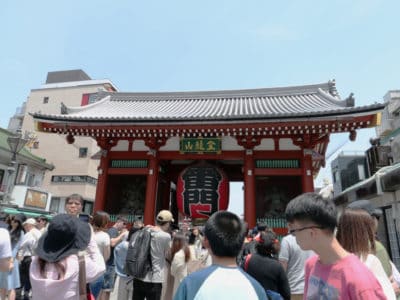
Our group first met in front of the Kaminari Gate (Kaminarimon). If you google Asakusa, this is probably one of the first pictures you’ll see, as it is the symbol of Asakusa. You’ll probably be greeted by a huge crowd of tourists taking pictures in front of this beautiful red gate. They will be vying for a chance to touch underneath the big red lantern which has a carving of a dragon.
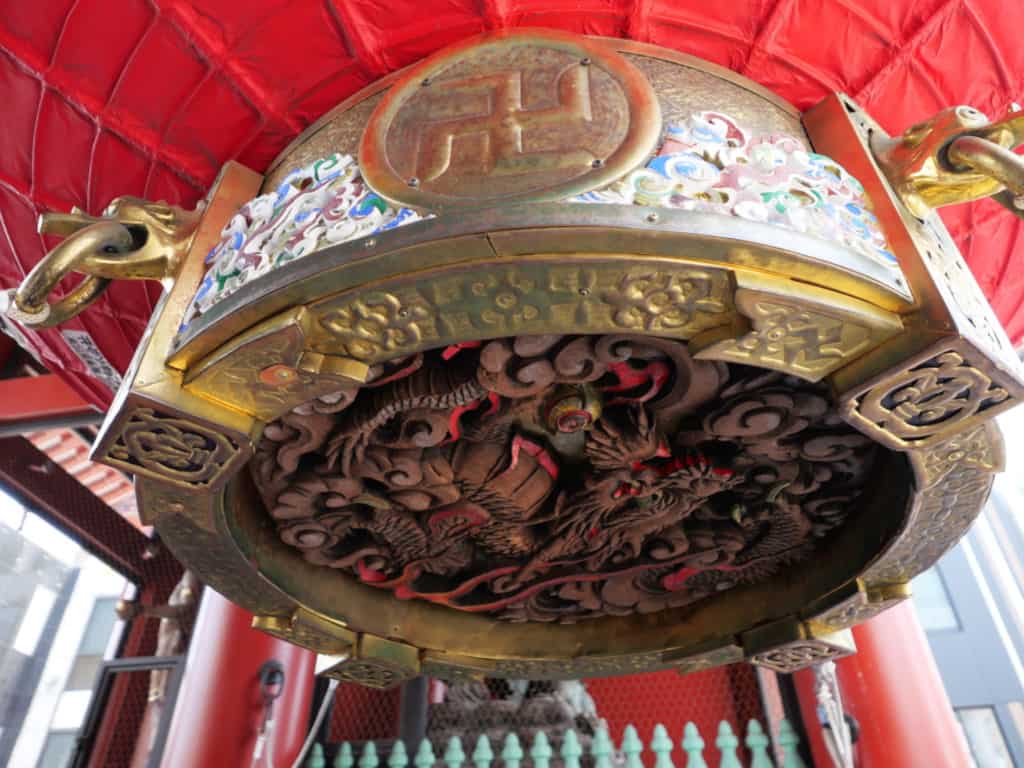
Our tour guide, Yusuke-san explained to us that Kaminarimon means Thunder (雷) Gate (門), hence the two characters you see on the lantern, 雷門.
Nakamise-Dori
Once we passed through the Kaminarimon gate, we found ourselves walking into a shopping street, Nakamise-dori. This place is one of Japan’s oldest shopping streets, filled with many souvenir shops and street food.
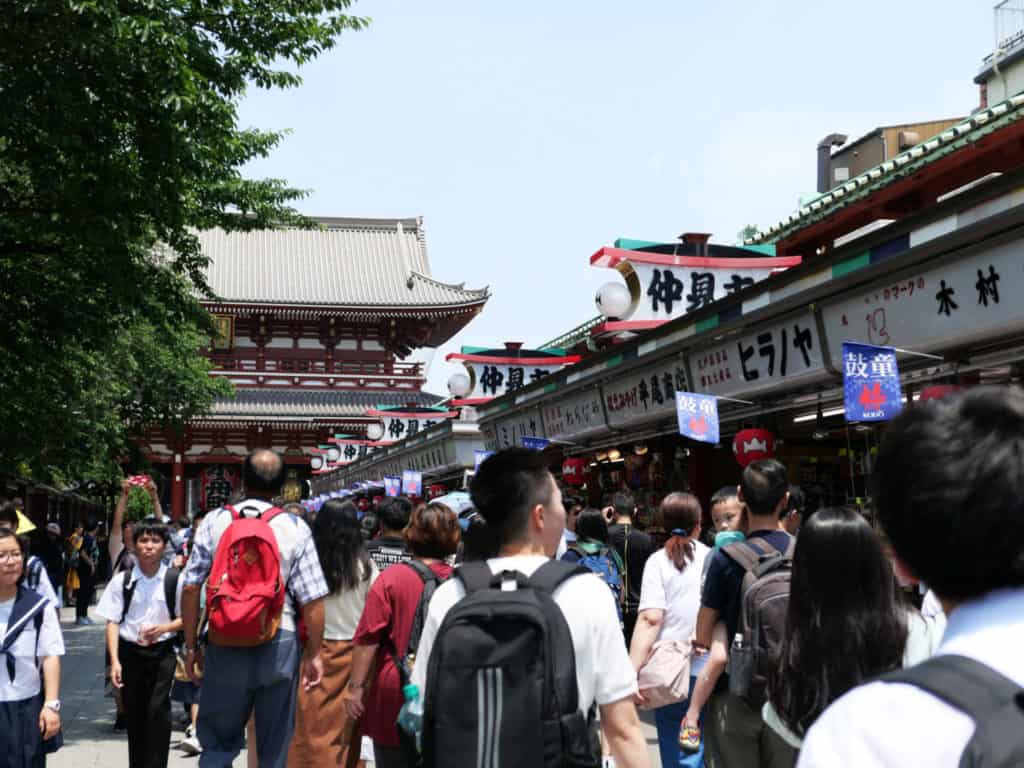
Daifuku
Here, our guide stopped us at one of the many delicious snack shops to try daifuku (大福). It is a small round mochi stuffed with a sweet red bean paste called anko. This daifuku, in particular, had a strawberry placed in the middle of the mochi. According to our guide, the food stall owners specifically only use strawberries harvested in Japan. Jioh and I both opted for the matcha daifuku, and though powdery, it was very much delicious.
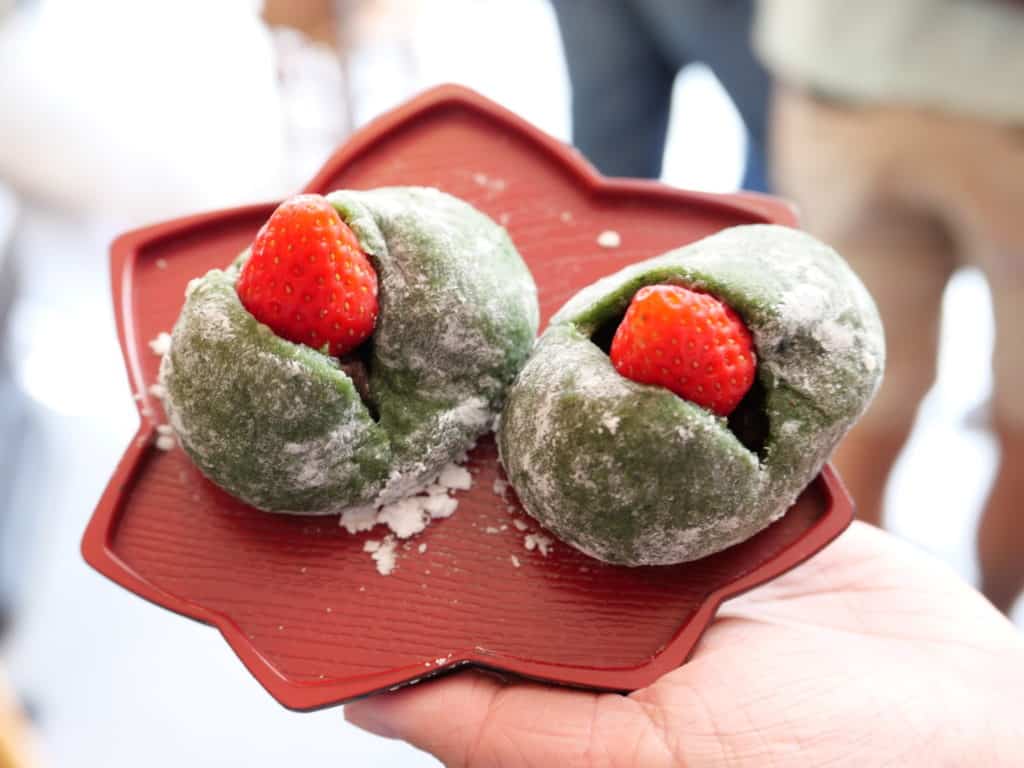
Menchi-katsu
Our next food we tried was menchi-katsu, a deep-fried ball of ground pork and onion. The tour was during a very hot day, but this didn’t stop the freshly fried snack from being delicious and juicy.
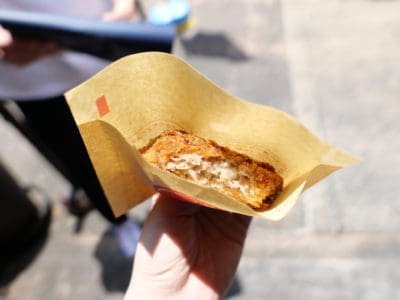
Sensōji
At the end of this street, we finally arrived at Sensoji, a Buddhist temple as well as the oldest temple in Tokyo.
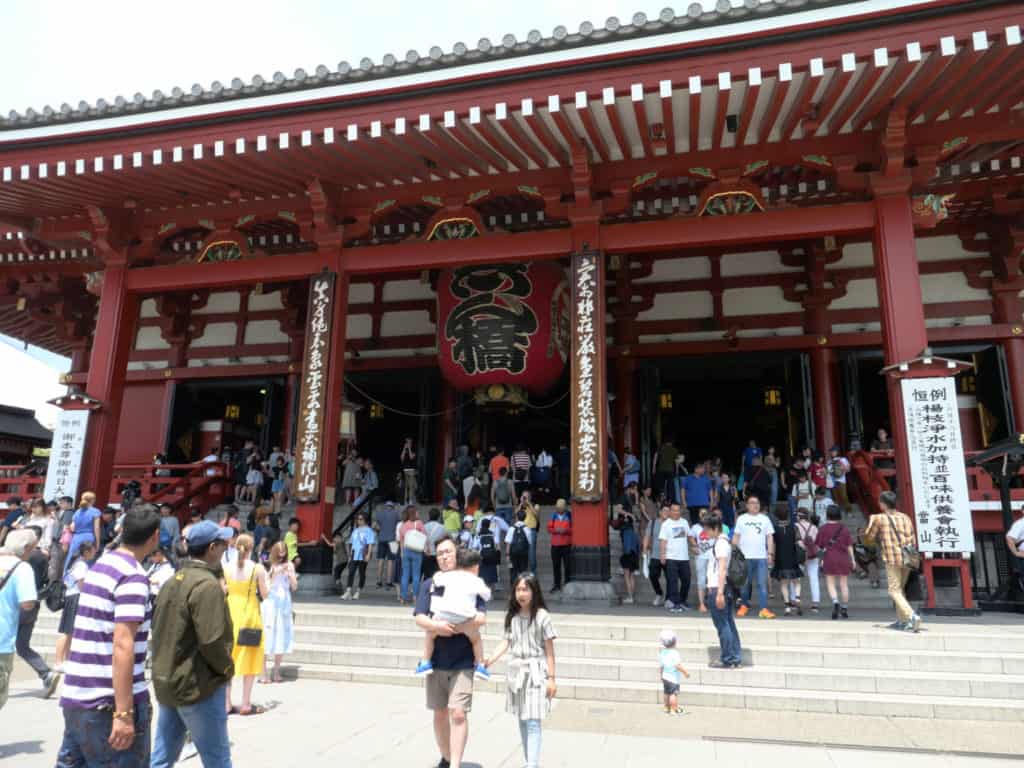
To the sides of Sensoji, there was also a five-story pagoda and Dempoin. However, before entering the temple, there is a section where you put in 100 yen to receive a fortune. You shake a metal box until a long stick comes out with a number written in kanji. From there, you pull out the box that has the same number on the stick and pull out a piece of paper. Each paper has a different set of fortune ranging from good to bad. Unfortunately, I managed to get bad fortune. All is not lost!! In order to get rid of the bad luck, all you have to do is tie it on one of the racks next to the fortune telling area.
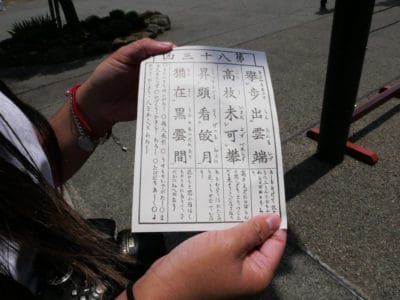
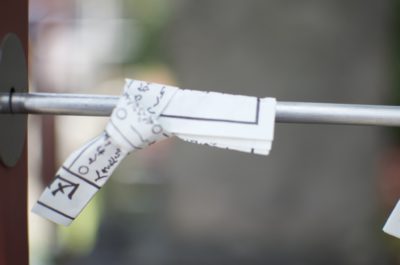
Jokoro & Omizuya
Right before entering the main temple, you will be stopped by a large pot looking structure. This is called jokoro (the mysterious smoke). Here, you have the option of purchasing incense for 100 yen. It is believed that the smoke somehow makes you smarter – many students visit the jokoro before their exams.
You will also have to wash your hands at omizuya, which means to purify yourself before going into the temple. To do so, you hold the ladle with your right hand, and wash your left hand. Then, switch to the left hand, and wash the right hand. Lastly, hold the ladle with your right hand again, pool the water on the left hand and rinse your mouth. Make note to not put your mouth on the ladle, and definitely don’t drink the water. Also make sure to let the dirtied water fall down in the trough on the ground and not back in the stream of water.
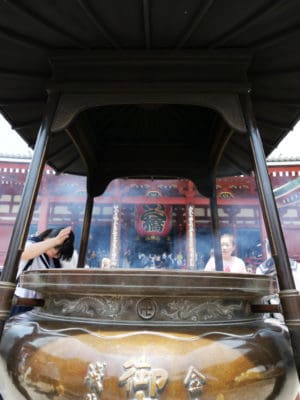
After having your future told, you walk up the steps to the temple and throw some change into a red box stationed in front of the praying area. From there, you say your prayers in front of the altar.
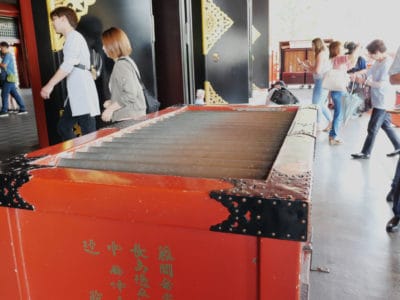
Shinto Shrine
Though the main attraction was the Buddhist temple, to the side is a Shinto shrine and beautiful garden filled with greenery and koi fish.

Yusuke-san stopped us in front of one of the pictures displayed on the side of the street and told us the story of why the whole area was built: Back then, two fishermen were fishing in the Sumida River. They pulled up their net to discover a statue of Bodhisattva Kannon. From then on, the village caught many fishes and decided to dedicate this temple to the Goddess of Mercy.
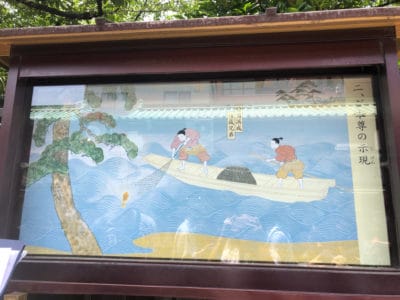
After a stroll through the “park”, our guide saved us from the sweltering heat and had us try some ice cream. I got the peach flavor while Jioh chose the condensed milk flavor. Both were amazing and receive a 10 out of 10, would recommend badge from us.
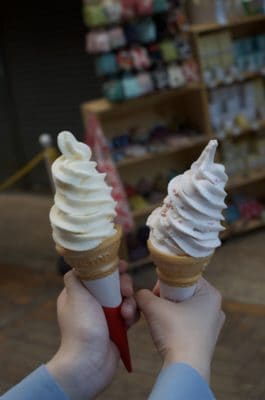
Kappabashi
Yusuke-san then walked us to a nearby place named Kappabashi Dougu Street. When you’re walking down this street, you’ll notice many strange creatures lined up in front of shops.
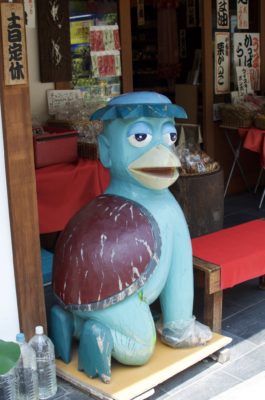
(Kim Kappa-dashian)
Kappa is a mythical demon found in Japanese folklore. They are often depicted as green and human like with webbed hands and feet, set with a turtle-like shell on their backs. However, Kappabashi is largely known as Tokyo’s kitchenware capital.
Our group made two stops here. First we stopped by a fake food shop. When you walk around in search of food, you’ll discover that many restaurants have fake foods outside their door as models of the actual food they are selling. Some shops get them from here, where they commission people to replicate their dishes. These dishes look no different from the real deal. The second stop was at a knife shop, where they sell a large variety of knives for different occasions- from cutting tuna to cutting bread.
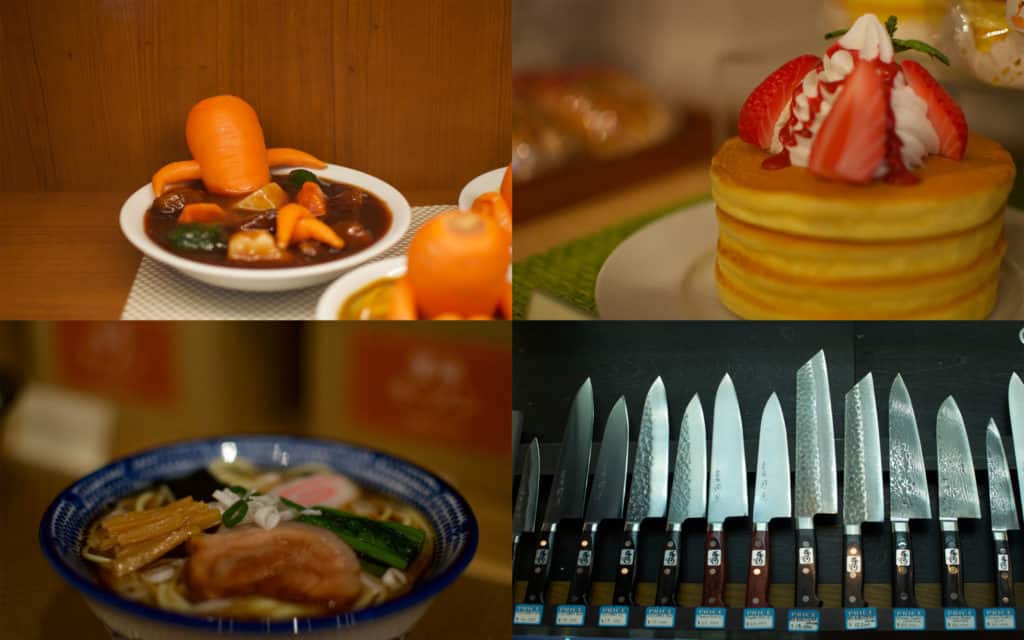
Okonomiyaki & Monjayaki
For the last stop in the tour, we ate a a restaurant specializing in okonomiyaki and monjayaki, a kind of savory Japanese style pancake. They are made of cabbage and sprouts mixed with batter. Okonomiyaki is topped with mayonnaise, sauce, and dry seaweed while monjayaki has a softer batter with broth poured into the mixture. The fun part about this restaurant was that we were able to cook on our own mini teppan. I made quite a mess trying to make the monjayaki, but that didn’t change the taste at all. Both kinds of pancakes were delicious! This dish would be delicious to eat with a glass of beer.
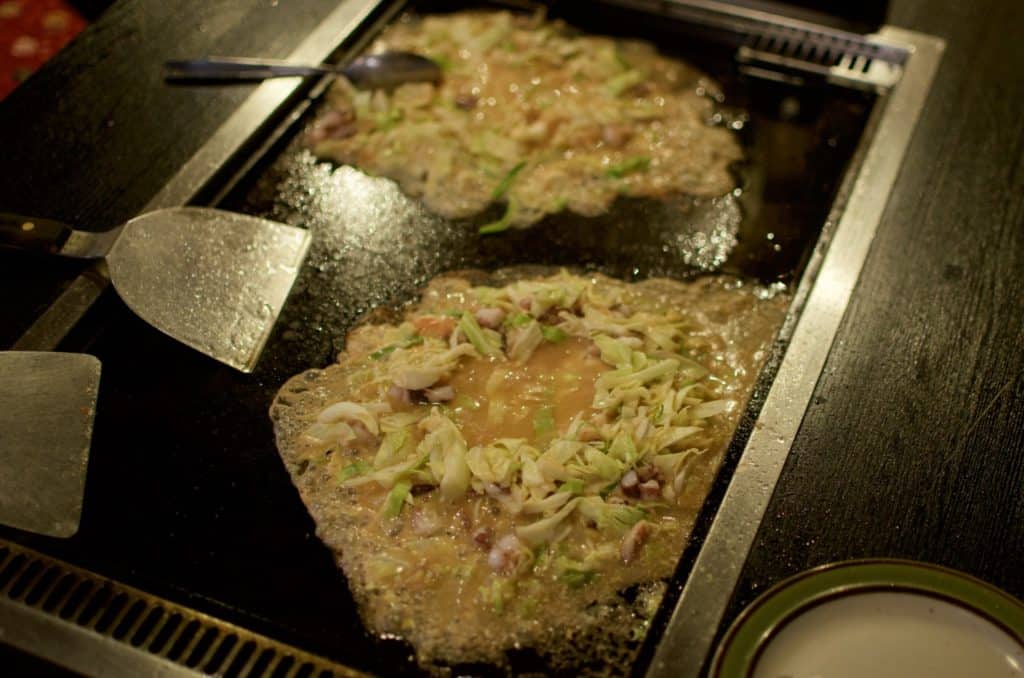
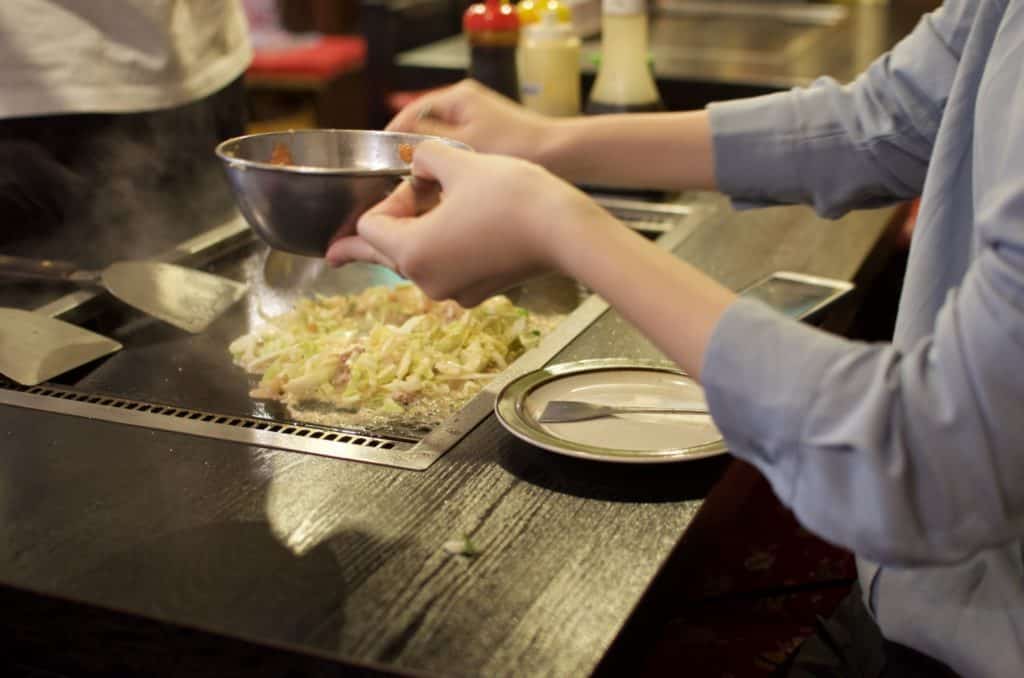
Overall the tour was a nice way to walk around Asakusa and experience firsthand the ‘air’ of traditional Japanese culture. If you’re like us and went on a hot summer day, make sure to drink plenty of water before, during, after the tour to avoid feeling dehydrated and tired!
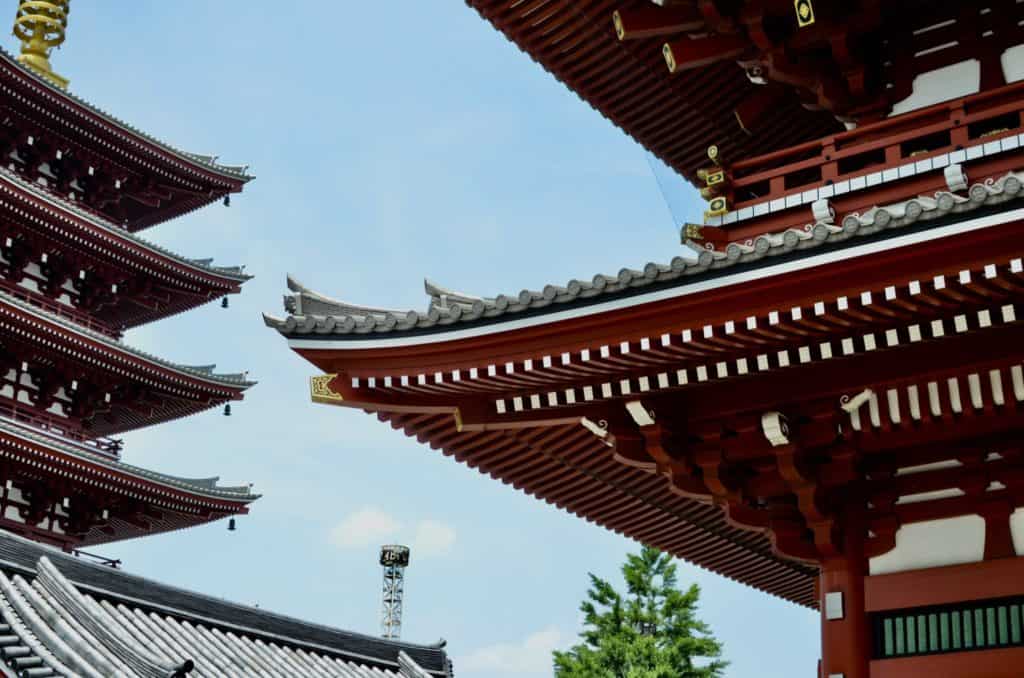
Enjoy a Discount
As a Mobal user you get an 8% discount from any tour by using the coupon code MDL640 at time of booking. Check out the Asakusa Tour by Magical Trip HERE!
This blog post was written by Jioh and Lena, Seibo Japan/Mobal Japan’s interns from South Korea and Texas.
To see what else they’ve been up to, click on this link: Jioh and Lena


